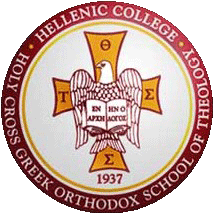"The Church as a Mission - Part 2: The Making of the Church"
The Church as a Mission
Part 2 - The Making of the Church
Fr. Alexander Schmemann’s Liturgical Theology Revisited
Dr. Athanasios N. Papathanasiou
Dr Theology, Lecturer at the Hellenic Open University (Athens)
2. THE MAKING OF THE CHURCH
As I have already said, I claim that openness to the world is not just a product of the Church life, but a constructive component of the very identity of the Church. I think that we can discuss this conviction, identifying four key themes in Schmemann’s work: 1) the tension between completeness and incompleteness; 2) the liturgy after the Liturgy 3) the sacrament of the offering; and 4) the Eucharist as derivative.
2.1 The tension between completeness and incompleteness
The origin of the Church, Schmemann says, is due to God’s initiative. It is he that makes the first move towards man.
“The Church is first of all and before everything else a God-created and God-given reality, the presence of Christ’s new life, the manifestation of the new ‘aeon’ of the Holy Spirit. And Orthodox in his contemplation of the Church sees it as the divine gift before he thinks fo the Church as human response to this gift.”
There then follows the human response:
“The Church is also human response to the divine gift, its acceptance and appropriation by man and humanity. If the order of the Church is shaped and conditioned by the eschatological fullness of the gift, it is sacramental sing, it is the acceptance of the gift and the growth into its fullness that is the purpose of the Christian community. The Church is fullness, and the Church is also increase and growth in faith and love, knowledge and koinonia.”
It is significate that here Fr. Alexander gives the Church a dynamic, not a static identity: The Church does not simply “exist” but also grows, so as to become in truth what it is called to be. But (we might as) what does “the growth of the Church” actually mean? Does it mean simply an internal process, in the sense that the existing community forms a closed entity which does however “improve” in quality? Here Fr Alexander’s views are very interesting, inasmuch as he seems to understand the Church’s progress in relation to its openness to the world!
“This response has two aspects, neither which can be separated from the other, because they condition each other and together constitute the dynamics of Christian life and action. The first is God-centered: it is…the growth in holiness of both the Christian individual and the Christian community…the second aspect of the Church as response is man – or world-centered…the Church is fullness and its home is in heaven. But this fullness is given to the world, sent into the world as its salvation and redemption. The eschatological nature of the Church is not the negation of the world, but, on the contrary, its affirmation and acceptance as the object of divine love. Or, in other terms, the entire ‘other-worldliness’ of the Church is nothing but the sign and the reality of the love of God for this world, the very condition of the Church’s mission to the world. The Church thus is not a ‘self-centered’ community but precisely a missionary community, whose purpose is salvation not from, but of, the world. In the Orthodox experience and faith it is the Church-sacrament that makes possible the Church-mission.”
This text, I think, is of amazing importance. On the one hand Schmemann regards mission not as the antithesis of the eschatological nature of the Church, but on the contrary as a manifestation of that nature in history. On the other hand, he does not regard opening up to the world as an activity of the Church once it has first been constituted, but as an element in the very process of constituting the Church: He sees this opening as an aspect of the human response, which, as we have seen, is a basic component of the Church!
Two words about the eschatological nature of the Church should be added here. Schmemaan was aware that there are many different ways of understanding “eschatology” (something that we often seem not to have realized, and so we use the term without explanation, as if it meant only one thing). Schmemann therefore hastens to clarify how he himself understands eschatology: “The Kingdom is still to come, and yet the Kingdom that is still to come is already in the midst of us. The Kingdom is not only something promised, it is something we can taste here and now”. He seems to be sympathetically incline to what is called “inaugurated eschatology”: the idea that the Kingdom has already dawned, but has yet to reach its zenith. In this eschatological context, however, I personally have the impression that he was more fascinated by the experience of the completeness of the Kingdom in the liturgy than by the sense of suspense that exists until the resurrection and the full coming of the Kingdom.
Particularly significant for our subject are the points where Fr. Alexander links the eschatological identity of the Church with the work it has to accomplish in history and in the world:
“One can rightly describe the Church as an eschatological reality, for its essential function is to manifest and to actualize in this world the eschaton, the ultimate reality of salvation and redemption. In and through the Church the Kingdom of God is made already present, is communicated to men…In the Eucharist “the Church becomes what it is”, fulfils itself as the Body of Christ, as the divine Parousia – the presence and the communication of Christ and of His Kingdom…In the Eucharist the Church accomplishes the passage from this world into the world to come, into the eschaton… Thus the whole life of the Church is rooted in the Eucharist, is the fruition of this Eucharistic fullness in the time of this world whose “image passeth by…’ This is indeed the mission of the Church.
Yet this view may give rise to some queries. Should one conclude that the manifestation of the eschaton is accomplished solely by the celebration of the Liturgy? In other words, is the Liturgy per se the mission of the Church? If it is, the mission of the Church is accomplished once the Liturgy is celebrated and the sacraments performed within the existing community’s actual opening up to what is not the Church. Some passaged in Schmemann’s work may seem to give support to this conviction. At the same time, however, he himself offers a valuable basis for a theology of openness. He courageously stressed, for example, that “there is no Christian life without martyria”. If Church life loses its missionary spirit, it truly risks degenerating into ritualism and mysticism.
“Having ceased to be the expression of the Church, worship has also ceased to be the expression of the Church in relation to the world. It is no longer seen as the leaven which raises the loaf, as the love of God directed toward the world, as witness to the Kingdom, as the good news of salvation, as new life. One the contrary, worship is experienced as departure out of the world for a little while, as a ‘vent’ or break in earthly existence, opened up for inlet of grace.”
In this perspective, another statement of his position is interesting:
“If…nothing can be added to the Church – its fullness is that of Christ Himself – the manifestation and the communication of this fullness constitute, on the other hand, the very life of the Church in this ‘aeon’. On the day of Pentecost, when the fullness of the Church was realized once for all, the time of the Church begun, the last and the crucial segment of the history of salvation. Ontologically the new only newness and, therefore, the only soteriological content of this segment is precisely mission: the proclamation and the communication of the eschaton, which is already the being of the Church and indeed its only being. It is the Church as mission that gives to this time it’s real significance and to history its meaning. And its mission that gives to the human response in the Church its validity, makes us real coworkers in the work of Christ.”
This text is particularly important because it speaks on the one hand of eschatology as the sole content of the Church, yet at the same time (and while others might be led by this categorical statement to abandon mission altogether) he defines missionary outreach as the Church’s raison d’etre! Here he does not speak simply of the Church in mission, but of the Church as mission!
As I said earlier, Schmemann was more fascinated by the experience of the fullness of the Kingdom in the liturgy than by the sense of incompleteness that exists until the full coming of the Kingdom. The previous, however, involves a dynamic that recalls an important aspect of suspense in ecclesiology, as boldly elucidated by Fr. Greogres Florovsky, drawing on St. Paul, St. John Chrysostom and Bishop Theophan: in a paradoxical way, they say, Christ in history is at once complete and incomplete! He is complete in respect of his Incarnation! He is complete in respect of his Incarnation, and inasmuch as his Body (the Church) has been constituted by the action of the Spirit; but he remains nonetheless incomplete so long as creation has not found its way into his body and has not yet reached the Kingdom.

